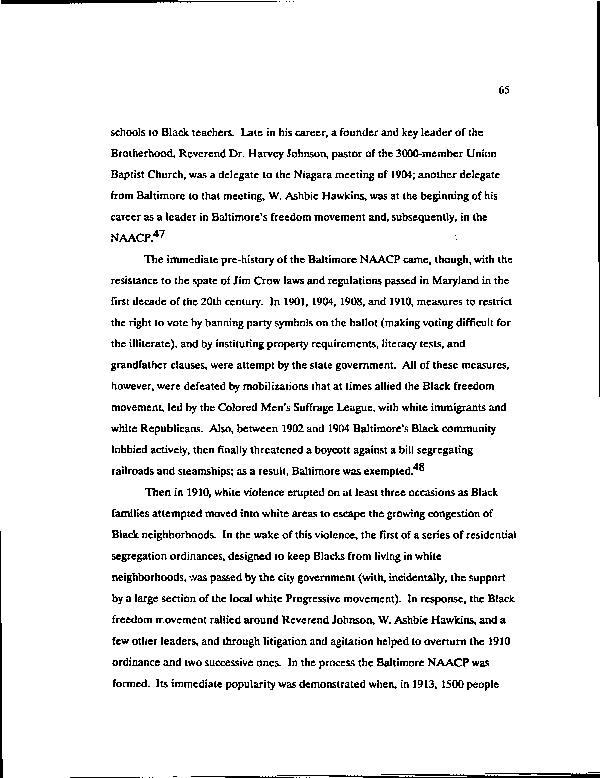|
65
schools to Black teachers. Late in his career, a founder and key leader of the
Brotherhood, Reverend Dr. Harvey Johnson, pastor of the 3000-mernber Union
Baptist Church, was a delegate to the Niagara meeting of 1904; another delegate
from Baltimore to that meeting, W. Ashbie Hawkins, was at the beginning of his
career as a leader in Baltimore's freedom movement and, subsequently, in the
NAACP.47
The immediate pre-history of the Baltimore NAACP came, though, with the
resistance to the spate of Jim Crow laws and regulations passed in Maryland in the
first decade of the 20th century. In 1901, 1904, 1908, and 1910, measures to restrict
the right to vote by banning party symbols on the ballot (making voting difficult for
the illiterate), and by instituting property requirements, literacy tests, and
grandfather clauses, were attempt by the state government. All of these measures,
however, were defeated by mobilizations that at times allied the Black freedom
movement, led by the Colored Men's Suffrage League, with white immigrants and
white Republicans. Also, between 1902 and 1904 Baltimore's Black community
lobbied actively, then finally threatened a boycott against a bill segregating
railroads and steamships; as a result, Baltimore was exempted.
Then in 1910, white violence erupted on at least three occasions as Black
families attempted moved into white areas to escape the growing congestion of
Black neighborhoods. In the wake of this violence, the first of a series of residential
segregation ordinances, designed to keep Blacks from living in white
neighborhoods, was passed by the city government (with, incidentally, the support
by a large section of the local white Progressive movement). In response, the Black
freedom movement rallied around Reverend Johnson, W. Ashbie Hawkins, and a
few other leaders, and through litigation and agitation helped to overturn the 1910
ordinance and two successive ones. In the process the Baltimore NAACP was
formed. Its immediate popularity was demonstrated when, in 1913,1500 people
|

